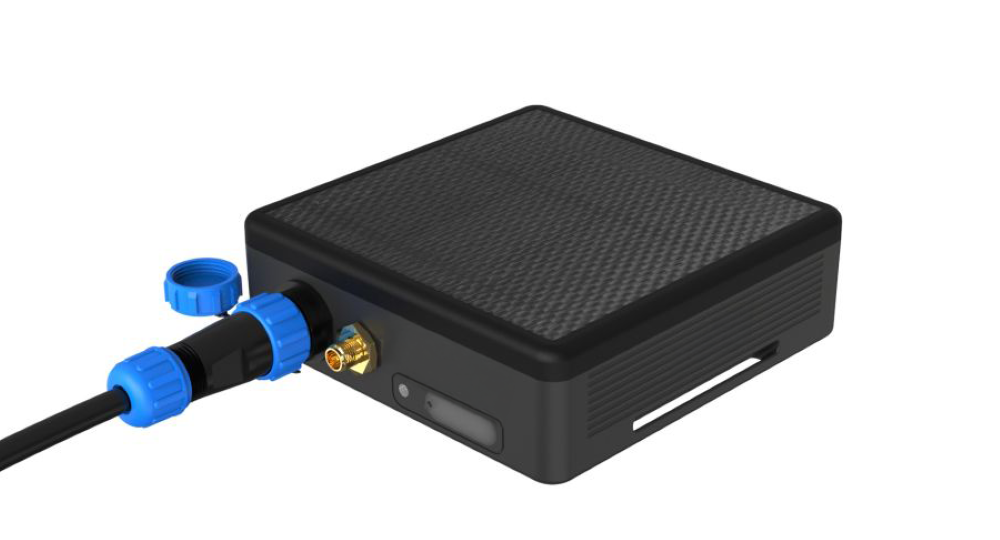Wireless Self-Powered Data Logger/Transmitter
KEY INFORMATION
Green Building - Sensor, Network, Building Control & Optimisation
TECHNOLOGY OVERVIEW
A self-sustaining, compact IoT sensor hub, has been developed to solve a critical challenge faced by industries requiring real-time monitoring in remote, hard-to-reach locations. Traditional sensor systems often require extensive wiring, regular maintenance, and external power sources, making them costly and inefficient for long-term deployment. This data logger/transmitter addresses these challenges with its self-sustaining solar-recharging battery system, which powers industrial sensors (4-20mA, Modbus, I2C, Pulse) and enables continuous data monitoring without the need for frequent maintenance or battery replacement.
With cellular connectivity options (LTE-M, NB-IoT, GSM) and GPS positioning, the device supports real-time data transmission from sensors, allowing industries such as environmental monitoring, agriculture, oil and gas, and infrastructure to monitor conditions like pressure, temperature, humidity, and flow rates from anywhere. Its rugged design ensures reliable operation in harsh environments, reducing the risk of equipment failure and costly downtime.
This plug-and-play solution is easy to deploy, making it an attractive option for industries seeking low-maintenance, cost-effective, long-term monitoring systems. The device is designed to optimize resource management, ensure operational efficiency, and enhance decision-making through continuous, reliable data collection. It is ideal for industries with remote operations or those requiring constant monitoring in challenging conditions.
The technology owner is seeking collaboration with system integrators specialising in automation, telemetry, and remote data acquisition.
TECHNOLOGY FEATURES & SPECIFICATIONS
This data logger/transmitter is a self-sustaining wireless sensor hub designed for real-time monitoring in remote and harsh environments. It features a built-in solar-recharging battery system that powers a wide range of industrial sensors, including 4-20mA, Modbus, I2C, and Pulse. The device is equipped with multi-network cellular connectivity options, including LTE-M, NB-IoT, and GSM, along with GPS positioning for accurate location-based data collection.
The rugged, weather-resistant design ensures reliable, long-term operation without frequent maintenance. The device supports seamless plug-and-play deployment, enabling effortless integration into existing systems for industries requiring data on temperature, pressure, humidity, water levels, and more.
The Ideal collaboration partners include:
- Sensor manufacturers: Integrating with specialized sensors for various industrial applications.
- Telecommunications providers: Expanding IoT network coverage for better connectivity in remote locations.
- Energy companies: For monitoring remote pipelines, solar farms, or oil fields.
- Environmental monitoring agencies: Tracking climate data, water levels, and air quality in isolated regions.
- Agriculture and smart farming firms: Enabling precision farming with real-time environmental data.
With this data logger/transmitter, industries can remotely monitor critical data, ensuring operational efficiency and reducing the need for manual inspections or costly maintenance.
POTENTIAL APPLICATIONS
Environmental Monitoring
- Air Quality Control: Measure pollution levels in urban or industrial zones.
- Flood Detection: Monitor water levels in rivers or reservoirs to provide early flood warnings.
Agriculture & Smart Farming
- Precision Agriculture: Monitor soil moisture, weather conditions, and irrigation systems to optimize crop yield.
- Livestock Management: Track environmental conditions affecting livestock health.
Infrastructure Management
- Structural Health Monitoring: Track vibration or stress on bridges, buildings, and roads.
- Smart Cities: Enable remote management of utilities, street lighting, and waste management systems.
Utilities and Energy
- Remote Energy Monitoring: Manage solar farms, wind turbines, or hydropower plants with real-time data.
- Water Utilities: Detect leaks or monitor water quality in reservoirs and pipelines.
Oil & Gas
- Pipeline Monitoring: Track pressure, flow rates, and potential leaks in remote pipelines.
- Wellhead Monitoring: Gather data on well conditions, reducing the need for manual inspections.
Market Trends & Opportunities
The global IoT market is projected to reach $1.4 trillion by 2027, with significant growth in industrial IoT driven by the demand for remote monitoring in sectors such as oil & gas, agriculture, utilities, and smart cities. Additionally, the industrial sensors market is expected to grow to $31 billion by 2028, reflecting strong opportunities for innovative solutions.
Unique Value Proposition
Self-Sustaining Operation: Unlike traditional systems that require frequent battery changes or external power sources, the device is solar-recharging battery ensures long-term, maintenance-free operation, reducing downtime and labor costs.
Affordable for Mass Deployment: The device is designed to be cost-effective for large-scale implementations. Its low-maintenance, plug-and-play nature significantly lowers installation and upkeep expenses, making it ideal for mass deployment across industries.
Wide Sensor Compatibility: Supporting a range of industrial sensors (4-20mA, Modbus, I2C, Pulse), the device is adaptable to multiple applications without requiring expensive custom solutions, making it more versatile and budget-friendly than many specialised systems.
Compact and Durable Design: The device is small, rugged form factor makes it easy to deploy in tight or remote spaces, while its durable build ensures long-lasting performance even in harsh environments, minimising the need for maintenance or replacements.
Global Connectivity: With LTE-M, NB IoT, and GSM connectivity, it ensures real-time data transmission even in remote areas, where traditional systems often struggle to maintain reliable communication.


